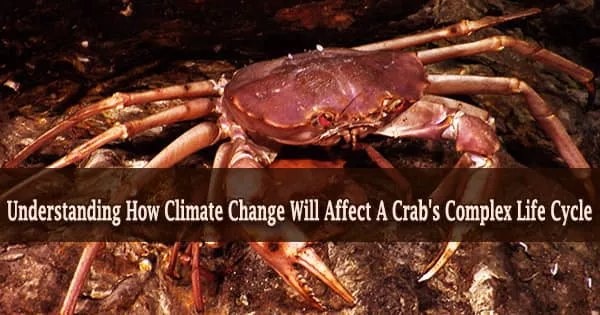Seasonality and timing are important components of complicated life cycles for many marine creatures, such as the Dungeness crab, where disturbances can have major consequences for the population. When all variables and moving pieces in a changing environment are taken into account, determining how climate change will affect each life stage is no small task.
Despite these obstacles, this data is critical for long-term fishery management and the development of new conservation methods.
The Pacific Northwest sector of the Dungeness crab fishery, which stretches from Alaska to Southern California, was studied by a team of UConn Marine Science researchers led by Ph.D. student Halle Berger, Assistant Professor Catherine Matassa, and Assistant Professor Samantha Siedlecki.
An example would be monitoring low oxygen events in the summer, and maybe pulling the crab traps earlier. This would help mitigate from the crabs dying in the trap.
Halle Berger
They assessed which life phases are most sensitive and to which stresses in research published this week in AGU Advances. The NOAA Ocean Acidification Program financed this research as part of a regional risk assessment and collaboration. It also investigates environmental justice issues, says Siedlecki,
“Tribal communities in the Pacific Northwest identify Dungeness as both culturally and economically important species for their way of life. Species are moving but of course, tribal communities don’t have the option of moving their land in response. The tribal communities are very interested and motivated to think about ways they can sustain the fishery.”
This study looked at three stressors: ocean acidification (OA), low oxygen levels (hypoxia), and rising temperatures, all of which are caused by future carbon emissions. According to Berger, they combined numerous layers of data to develop a realistic model for studying the effects of stresses at all stages of life, from eggs to larvae, juveniles, and adults.
The Intergovernmental Panel on Climate Change (IPCC) uses representative carbon pathways (RCP) to simulate future circumstances. RCPs are emission scenarios that reflect various degrees of carbon emission reduction.
“We used RCP 8.5, which is the highest, and considered the ‘worst case scenario’ if there is no climate change mitigation at all,” says Berger. “Then we overlaid the ocean conditions and habitat maps for each life stage. We also added something new to the framework, where we layered in a larval transport model to simulate the movement of larvae in the water column to get a more realistic picture of the conditions they would experience.”
The researchers then looked at data from previous Dungeness crab studies, which helped them assign vulnerability ratings at each life stage in order to better understand how the crabs reacted to the stresses on a more personal basis. They used a weighted mean to evaluate vulnerability at the population level, which, according to Berger, considers which life stage contributes the most to population growth or vulnerability.
“It turned out that the adult life stage is the most critical in driving the overall population vulnerability,” Berger says.
“We found that for all three stressors there will be increased population-level vulnerability in the future, and the most severe is to hypoxia. Low oxygen occurrences are limited to the upwelling season, which occurs in the spring and summer and affects adults, but ocean acidification will affect all life stages year round in the future.”
These data, according to the researchers, might be easily incorporated into decision-making processes to safeguard crucial life stages in, particularly stressful situations, hence assisting in the maintenance of sustainable fisheries.
“An example would be monitoring low oxygen events in the summer, and maybe pulling the crab traps earlier,” says Berger. “This would help mitigate from the crabs dying in the trap.”
Adults, the most vulnerable and important life stage for population maintenance, would be protected if these steps were implemented. This study, according to Berger, emphasizes the significance of taking a similar approach to species vulnerability.
The relevance of seasonality and life cycle complexity in this paradigm is highlighted in this study. This sort of paradigm might be used in other vulnerability assessments looking at marine species with complicated life cycles to capture some of those losses.
The laboratory trials that were conducted could only look at each of these stressors separately, but they will undoubtedly occur simultaneously. It’s critical that there exist trials that look at the effects of several stressors in order to better assess the overall, cumulative susceptibility.





